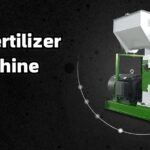Grass plays a vital role in livestock nutrition, providing essential nutrients, fiber, and moisture. Creating high-quality grass feed pellets requires specialized animal feed processing machines designed to handle the unique characteristics of grass. This article outlines the essential grass pellet machines and processes involved in manufacturing grass feed pellets, highlighting the importance of each step.
Grass Feed Pellet Production Process
The production of grass feed pellets typically involves several critical steps:
- Harvesting and Wilting: Freshly cut grass is allowed to wilt to reduce moisture content, making it easier to process and enhancing its storage life.
- Chopping and Grinding: The wilted grass is chopped into smaller pieces, approximately 2 inches in length, using a forage harvester or hammer mill. This ensures uniform particle size, which improves the feed’s palatability for livestock.
- Drying: Depending on the moisture level of the chopped grass, further drying may be necessary. This is usually achieved with a rotary dryer or a belt dryer to reach the optimal moisture content for pelleting.
- Pelleting: The dried grass is fed into a pellet mill, where it is compressed into compact pellets. The size of the pellets can be adjusted according to the specific needs of the livestock.
- Cooling and Screening: After pelleting, the grass pellets are cooled to ambient temperature using a counter-flow cooler. A vibrating screen then removes any fines or oversized pellets to ensure a uniform product.
- Packaging and Storage: The final pellets are packaged into bags or bulk containers, ready for storage and distribution.

Essential Machines for Grass Feed Pellet Production
Several machines are crucial for producing high-quality grass feed pellets:
- Forage Harvester: This machine cuts and chops fresh grass. It can be equipped with various cutting heads and chopping mechanisms to achieve the desired particle size.
- Hammer Mill: Used to grind dried grass into fine particles, the hammer mill can process various types of grass, including alfalfa, timothy, and orchard grass.
- Rotary Dryer: This machine efficiently reduces the moisture content of chopped grass by tumbling it while exposing it to hot air.
- Pellet Mill: The core of the pelleting process, the pellet mill compresses dried grass into dense pellets using a die and roller assembly. Pellet mills come in various capacities to match different production needs.
- Counter-Flow Cooler: Essential for cooling pellets after formation, this machine prevents spoilage and maintains pellet quality.
- Vibrating Screen: This device ensures that only pellets of the correct size pass through, removing any fines or oversized particles.
- Packing Machine: Used for packaging the finished pellets, the packing machine fills and seals bags of various sizes for secure storage and easy handling.
Key Considerations for Machine Selection
When choosing animal feed processing machines for grass feed production, several factors should be taken into account:
- Capacity: Select machines that match your production volume and allow room for growth. Investing in machines with higher capacity can provide flexibility for future expansion.
- Raw Material Compatibility: Ensure that the machines can handle the specific types of grass you plan to use, as some machines may be better suited to certain varieties based on their physical properties.
- Efficiency: Look for machines with high efficiency ratings to reduce energy consumption, maintenance costs, and downtime.
- Customization Options: Many manufacturers offer customization options, such as adjusting pellet size or integrating specialized components, to meet your specific production needs.
- Maintenance and Support: Consider the ease of maintenance, availability of spare parts, and level of technical support when selecting machines. Reliable after-sales service can minimize downtime and ensure long-term performance.
Case Studies in Grass Feed Processing
RICHI Machinery has successfully implemented several grass feed processing projects:
- Alfalfa Grass Pellet Plant: A 5 T/H alfalfa grass pellet plant was established for a livestock farm in the United States. The project included a forage harvester, hammer mill, pellet mill, cooler, and packaging equipment.
- Timothy Grass Pellet Line: A 3 T/H timothy grass pellet line was installed for a dairy farm in Canada, utilizing a rotary dryer, pellet mill, and automated packaging system.
- Orchard Grass Pellet Mill: A 1 T/H orchard grass pellet mill was supplied to a small-scale livestock operation in Australia, enabling on-farm production of grass feed pellets.
Conclusion
Producing high-quality grass feed pellets requires the right combination of specialized equipment, from forage harvesters and hammer mills to pellet mills and coolers. Each machine plays a crucial role in the process, ensuring the final product meets the nutritional needs of livestock. (Related post: alfalfa cubed pellet machine)
When selecting equipment for grass feed production, consider factors such as capacity, raw material compatibility, efficiency, customization options, and maintenance support. By choosing the right machines and following best practices in production, livestock farmers and feed producers can ensure a consistent supply of nutritious and palatable feed.
As the demand for sustainable and locally-sourced animal feed grows, on-farm and small-scale grass feed production using specialized processing machines offers a cost-effective and environmentally friendly solution for livestock operations of all sizes.


